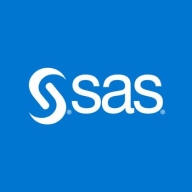

SAS Visual Analytics and Dundas BI are prominent in business intelligence tools. SAS Visual Analytics appears to have an advantage in support and pricing, while Dundas BI is preferred for its feature set.
Features: SAS Visual Analytics offers advanced statistical analysis capabilities, efficient data handling, and high-level data visualization tools. Dundas BI stands out with customizable dashboards, versatile data cubes, and a robust scripting engine for personalized analytics solutions.
Room for Improvement: SAS Visual Analytics could enhance user interface personalization, streamline initial setup, and reduce complexity for non-technical users. Dundas BI might improve setup times, offer more intuitive integration methods, and enhance real-time data processing capabilities.
Ease of Deployment and Customer Service: SAS Visual Analytics provides a comprehensive and adaptable deployment model with strong support services, facilitating a smoother initial setup. Dundas BI offers flexibility with robust integration options, focusing on customization after deployment, though it may require more setup effort.
Pricing and ROI: SAS Visual Analytics generally involves a higher upfront cost with significant ROI through its sophisticated analytical features. Dundas BI offers a lower initial setup cost, providing ROI through flexible features and ease of scalability.
The enterprise subscription offers more benefits, ensuring valuable outcomes.
They provide callbacks to ensure clarity and resolution of any queries.
SAS Visual Analytics is stable and manages data effectively without crashing.
In terms of configuration, I would like to see AI capabilities since many applications are now integrating AI.
The ability to query information from our Excel data into SAS to view specific data is invaluable.
| Product | Market Share (%) |
|---|---|
| SAS Visual Analytics | 3.4% |
| Dundas BI | 0.6% |
| Other | 96.0% |


| Company Size | Count |
|---|---|
| Small Business | 8 |
| Midsize Enterprise | 3 |
| Large Enterprise | 7 |
| Company Size | Count |
|---|---|
| Small Business | 13 |
| Midsize Enterprise | 8 |
| Large Enterprise | 19 |
Dundas BI is a powerful, flexible, end-to-end business intelligence platform that simplifies the entire analytics process and empowers its users to analyze and visualize data. The solution enables organizations to create and view interactive dashboards, reports, scorecards, and more. Dundas BI can be integrated into an existing website as part of a custom BI solution or it can be deployed as the central data portal for your organization. The solution is suitable for mid-to-large sized companies.
Dundas BI Features
Dundas BI has many valuable key features. Some of the most useful ones include:
Dundas BI Benefits
There are many benefits to implementing Dundas BI. Some of the biggest advantages the solution offers include:
Reviews from Real Users
Below are some reviews and helpful feedback written by PeerSpot users currently using the Dundas BI solution.
A Business Intelligence Consultant at Siemens Industry says, “The flexibility of the dashboard designer is great. You can control every single pixel and no matter what the user asks for we can deliver. It has a lot of out-of-the-box options that you can use to customize your dashboard. There is also the option to use their JavaScript API, however, in 99% of the cases, the built-in options are more than enough. I also love the control you have on what queries Dundas BI is generating against our databases. This allows us to create really fast dashboards even when running against millions of records.”
James D., System Architect at Yulista, LLC mentions that the most valuable aspect of the solution is its “ability to warehouse query results. This is good because you do not have to have a data warehouse, you let Dundas warehouse the results of a query that runs long during off hours.”
Another reviewer shares, “The built-in ETL functionality has allowed us to combine data sources without the need for a full SSIS package. This saves time and allows for a quicker time to market.”
SAS Visual Analytics is a data visualization tool that is used for reporting, data exploration, and analytics. The solution enables users - even those without advanced analytical skills - to understand and examine patterns, trends, and relationships in data. SAS Visual Analytics makes it easy to create and share reports and dashboards that monitor business performance. By using the solution, users can handle, understand, and analyze their data in both past and present fields, as well as influence vital factors for future changes. SAS Visual Analytics is most suitable for larger companies with complex needs.
SAS Visual Analytics Features
SAS Visual Analytics has many valuable key features. Some of the most useful ones include:
SAS Visual Analytics Benefits
There are many benefits to implementing SAS Visual Analytics. Some of the biggest advantages the solution offers include:
Reviews from Real Users
Below are some reviews and helpful feedback written by PeerSpot users currently using the SAS Visual Analytics solution.
A Senior Manager at a consultancy says, “The solution is very stable. The scalability is good. The usability is quite good. It's quite easy to learn and to progress with SAS from an end-user perspective.
PeerSpot user Robert H., Co-owner at Hecht und Heck GmbH, comments, “What I really love about the software is that I have never struggled in implementing it for complex business requirements. It is good for highly sophisticated and specialized statistics in the areas that some people tend to call artificial intelligence. It is used for everything that involves visual presentation and analysis of highly sophisticated statistics for forecasting and other purposes.
Andrea D., Chief Technical Officer at Value Partners, explains, “The best feature is that SAS is not a single BI tool. Rather, it is part of an ecosystem of tools, such as tools that help a user to develop artificial intelligence, algorithms, and so on. SAS is an ecosystem. It's an ecosystem of products. We've found the product to be stable and reliable. The scalability is good.”
We monitor all Data Visualization reviews to prevent fraudulent reviews and keep review quality high. We do not post reviews by company employees or direct competitors. We validate each review for authenticity via cross-reference with LinkedIn, and personal follow-up with the reviewer when necessary.